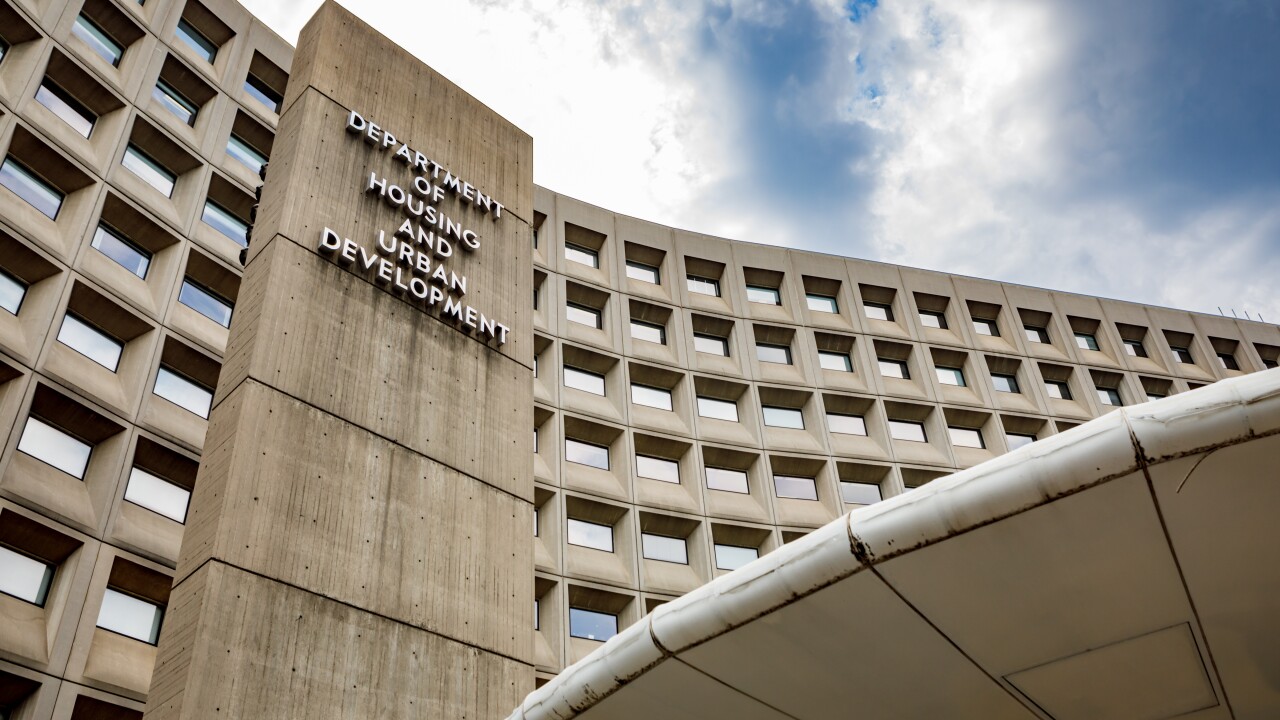-
FHA loans accounted for about half of the annual rise in foreclosure starts and 80% of the rise in active foreclosures in September, according to ICE.
October 24 -
HUD denied claims that 40% of the administration's workforce will be cut.
February 25 -
The outstanding amount that people ages 62 and up hold represented a nearly $15.4 billion gain in property value offset by a record $2.32 billion in borrowing.
December 19 -
The incentives are part of a broader set of Federal Housing Administration servicing changes for Home Equity Conversion Mortgages that also offers some new options for procedures.
December 1 -
Delinquencies are on the rise for FHA-backed loans, with nearly 10% of low-credit borrowers in early payment default. Economists and policy experts say this could signal trouble ahead for other credit products.
October 28 -
The head of the Federal Housing Administration said Congress should consider whether to continue allowing the loan floor and ceiling to remain tied to changes in the conforming mortgage limit.
December 2 -
The extension of the FHA’s willingness to conditionally endorse loans with suspended payments came amid a renewed push by public and private entities to spread awareness of the CARES Act option.
November 30 -
Mortgage applications slipped 0.3% from one week earlier, as refinance volume, particularly for Federal Housing Administration and Veterans Affairs loans, shrank significantly, according to the Mortgage Bankers Association.
November 18 -
Rates could be 50 basis points steeper than the MBA’s current projections, which anticipate the 30-year mortgage will average 3.3% next year, up from nearly 3% this year.
November 16 -
FHA volumes, a key contributor to Ginnie Mae issuance, could fall as long as the refinancing boom continues — unless the FHA takes a step that could reverse that trend.
November 10 -
Mortgage applications increased 3.8% from one week earlier as a drop in most loan interest rates brought on an increase in refinance activity, according to the Mortgage Bankers Association.
November 4 -
The forbearance rate improved to the a level not seen since early April, but getting back to pre-COVID levels will require employment gains or additional government stimulus measures, according to the Mortgage Bankers Association.
November 2 -
A booming housing market contrasts with a slow-to-improve job market, making for lopsided improvement in the number of troubled mortgages, according to numbers from the Mortgage Bankers Association.
October 26 -
As of the end of July, there were more than 1 million past-due mortgages not in forbearance plans, and the majority likely would have qualified for forbearance under the CARES Act.
October 22 -
Mortgage applications decreased 0.6% from one week earlier, although a slight drop in purchase volume belied the fact that consumers are taking advantage of the current rate environment, according to the Mortgage Bankers Association.
October 21 -
The overall forbearance rate was under 6% for the first time since April as another large swath of loans fell out of CARES Act coverage, according to the Mortgage Bankers Association.
October 19 -
Mortgage applications decreased 0.7% from one week earlier, but lending activity should continue strong for the remainder of the year as rates stay low, according to the Mortgage Bankers Association.
October 14 -
GSE mortgages in forbearance fell for the 17th straight week, spearheading the overall downtrend, according to the Mortgage Bankers Association.
October 5 -
Over 3.6 million borrowers sit in coronavirus-related forbearance with portfolio and private-label securitized loans driving the week's increase, according to Black Knight.
October 2 -
Mortgage applications decreased 4.8% from one week earlier, as refinance activity was down even as average rates fell to a new record low, according to the Mortgage Bankers Association.
September 30



















